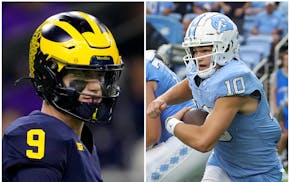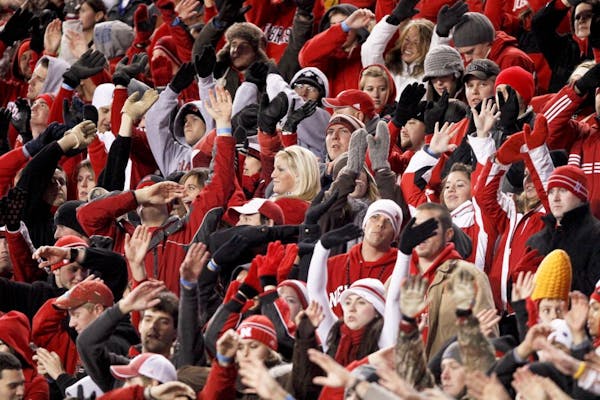Gophers athletic director Norwood Teague took a reconnaissance trip to Nebraska in late August to tour the Cornhuskers' posh athletic facilities. He invited billionaire booster T. Denny Sanford to accompany him.
That's like a wide-eyed kid dragging his parents into a toy store a month before Christmas to, you know, just check things out.
Yep, these toys sure would be nice to have.
"Having Denny with us was educational for him, and he's involved in some of our thought process as we go through this," Teague said.
In other words, Teague shrewdly wanted Sanford to get a close-up look at the sheer magnitude of an ever-expanding arms race in college athletics. He wanted Sanford to see a side-by-side comparison within the conference to fully understand how much the Gophers are lagging in this area.
Facility upgrades serve a major function in a nonstop quest to gain an edge in recruiting, keep pace with competitors and show how far a school is willing to go in demonstrating its commitment level. The cost of business isn't deterred by sticker shock these days.
Few do it better than Nebraska, which will offer the Gophers football team a bird's-eye view of how the haves operate when the teams meet Saturday at Memorial Stadium on Saturday. The Cornhuskers spared no expense in their athletic department digs, which include a new $18.7 million basketball facility that's outfitted with enough bells and whistles to make the 1 percent population blush.
Teague described Nebraska's athletic facilities as "very holistic" with an emphasis on development while also acknowledging the basketball practice facility is "off the charts." The push for plush facilities is not limited to traditional powerhouse programs, either. Northwestern recently approved plans to build a $220 million athletic complex for its football operations.
The Gophers are in catch-up mode, and Teague's primary objective as the school's new athletic director is to oversee sweeping upgrades. The school put considerable time, effort and resources into the construction of TCF Bank Stadium, and the result is a gem of a football venue. But that's just a start to changes that are long overdue.
Teague inherited a laundry list of facility projects that he hopes to address in one master plan. In no particular order, the Gophers need a basketball practice facility, a new football-only indoor facility, a new track and a larger academic center. The price tag likely will exceed $100 million. They also need to finish their new baseball stadium and eventually reconfigure and/or modernize Williams Arena.
The Gophers hired Kansas City-based architectural firm Populous to provide a road map for how to proceed. Populous, which designed TCF Bank Stadium, Target Field and Xcel Energy Center, has examined the Gophers athletic facilities and geographic footprint and is scheduled to present its findings to Teague and school officials in two weeks. Teague hopes to have a final plan in the next few months.
"They're looking at what we have, what we need and how we can meld it all together," Teague said.
Teague said his department lacks "day-to-day facilities, the support facilities." Football is a prime example. The team holds its post-practice training table in a lobby. Coaches work in offices the size of walk-in closets. And punters routinely hit the roof in the indoor facility, causing chunks of insulation to fall in the middle of the field. That's amateurish.
Tubby Smith has long campaigned for a practice facility to offset Williams Arena's age and availability issues. The academic center is undersized and not equipped to handle a high volume of athletes at one time. Teague also indicated his desire to build a second indoor facility so that nonrevenue sports such as soccer can have better access to convenient practice times. As it is, Teague said some athletes are forced to switch majors because limited availability in the indoor facility often presents conflicts with class schedules.
"That really is a big deal," he said.
Let's be clear, though: Better facilities won't necessarily guarantee better results. They're certainly a critical piece to the puzzle, but a state-of-the-art practice facility is just that, without good coaching and talented players.
"You've got to have both," Teague said. "It's not going to be a magic pill. But it can be the thing that holds you back and puts one arm behind your back."
Financing those projects won't be easy, but the arms race in college athletics offers schools two options: Keep up or get left behind.
Chip Scoggins ascoggins@startribune.com
Scoggins: Why 'championship or bust' fits these Wolves

Scoggins: Anatomy of a game-saving play as Correa throws out Ohtani

Scoggins: McCarthy or Maye? Ex-U coach breaks down Vikings' options
Scoggins: Cory Provus getting ready for 'biggest challenge' of career


